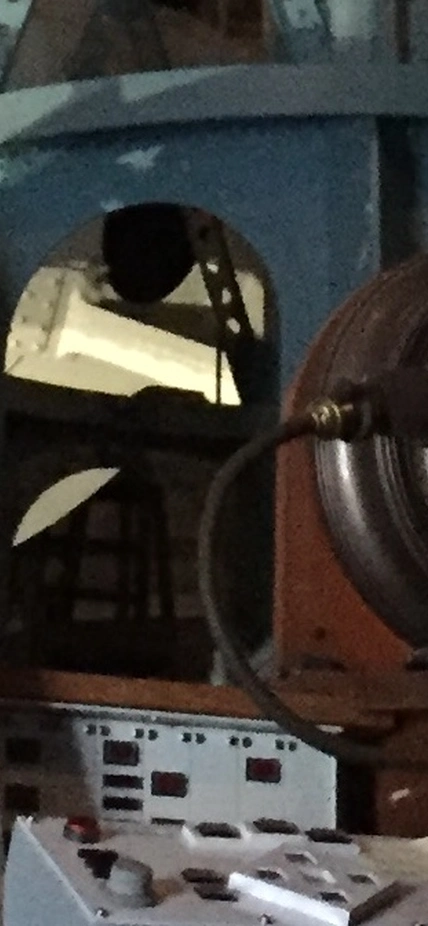What questions are you pursuing in your career?
Currently, we think galaxies grow two ways - they either gather gas and dust around them or they collide with other galaxies and they merge into one larger galaxy. I am interested in understanding galaxy mergers, and specifically how they affect the galaxies involved. I study how much star formation is triggered when galaxies merge and at what point star formation happens during the merger. I also look at whether galaxy mergers trigger accretion of gas onto the supermassive black hole at the center of the galaxies. Studying galaxy mergers is important because our own galaxy, the Milky Way, is at some point going to merge with the Large Magellanic Cloud and eventually Andromeda. We have to study other mergers happening now in order to have an idea of what will happen to us in the (very distant) future.

How is your research done?
I’m working on two different projects. Both involve having the full field of view of galaxies undergoing mergers. One of them involves mapping the galaxies in detail along all spectra lines, for which I'm building a new instrument called the Reformatting Optically-Sensitive IMACS Enhancing (ROSIE) Integral Field Unit. ROSIE will measure the wavelength information over the whole area of a galaxy, which will allow me to study the galaxies’ chemical compositions and dynamics, as well as to measure the temperature of the gas and whether it is heated by radiation from local star formation or from a black hole. My second project uses a special instrument to take a snap-shot of a galaxy that targets one specific oxygen, hydrogen, or nitrogen emission feature. These emission features target hot gas in both star formation regions and outflows driven by active black holes; these observations measure how spread out the hot gas is and what caused the gas to be that hot (we can determine this because black holes are hotter than star forming regions).
What is one of your biggest discoveries?
I’m really proud of the instrument I’m designing with help from Steve Shectman. ROSIE is unique because it has such a large field of view while still having good spatial resolution, but this means the optics have to be incredibly complex and precise. Most similar instruments that measure wavelength/spectral information cover only the core of our local galaxies, but ROSIE will be able to map the entire galaxy. It represents a new capability for the Magellan telescope and is something currently missing on many telescopes of this size.

When did you realize you were interested in astronomy and what path did you take to get there?
I was always interested in science or engineering, and I went to several summer camps for different STEM programs. In high school, I went to a two-week hands-on astronomy camp in North Carolina. They let me drive a giant radio telescope with a hand paddle, and make my own observations of a variable star (a star that changes in brightness repeatedly over a certain time period). The variation period had been previously measured at 15 days, but had not been measured in recent years. With the observations I made at camp, I actually discovered that the star’s variation period had changed! I measured a variation period of 19 days. It was an important moment for me because the hands-on aspect of that camp let me know that I could actually do astronomy research. Getting my bachelor’s degree in Astronomy from the University of Washington further reinforced my decision to become an astronomer. I’ve found an excellent and supportive community in astronomy.
What has the Carnegie Instrumentation Fellowship meant to you?
The chance to work with incredibly skilled people like Steve Shectman and Carnegie’s instrumentation and engineering team is invaluable. Carnegie has a top class instrumentation program, and the chance to build instruments for Las Campanas Observatory sets Carnegie so far apart. Our engineering group and machine shop allow us to design and build many parts for instruments on-site instead of having to send out for parts. Here I’m able to build an instrument in 4 years, whereas most instruments take a much longer time. There are also many excellent scientists here to collaborate with and to develop new scientific programs. And of course there’s the access to Magellan. Being guaranteed observing time on a telescope is really important as a postdoc. There’s a lot to like about Carnegie!
